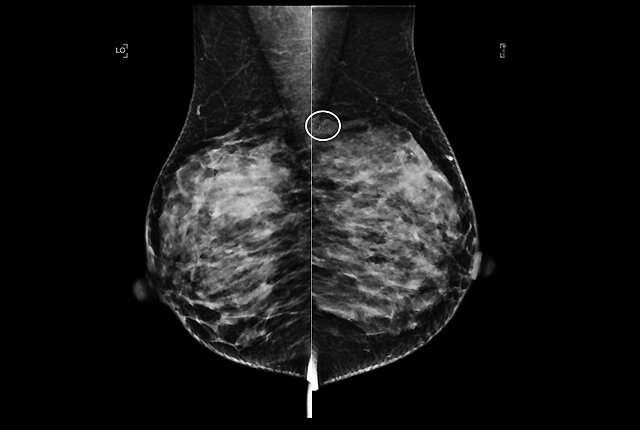

From March to September 2020, breast biopsies and detected cancers at U.S. Breast Cancer Surveillance Consortium facilities dropped sharply, compared with the same span a year earlier: Biopsies declined by 23% and detected cancers by 24%.
Newly published research attributes those downturns mostly to the postponement of routine screening mammograms as the COVID-19 pandemic took hold.
Moreover, those postponed mammograms appeared to disproportionately affect women of color, the research suggests, as breast cancer diagnoses during the span diminished at different rates across demographic groups: Non-Hispanic white women had 17% fewer breast cancer diagnoses, while the year-over-year decline was 53% for Asian women, 43% for Hispanic women, and 27% for Black women.
The findings, published recently in Radiology, emerged from a study led by Dr. Kathryn Lowry, an assistant professor of radiology at the University of Washington School of Medicine, and investigators from the consortium.
“Screening mammograms are our most important tool for detecting breast cancer early,” she said. “A woman might think, ‘I’m feeling OK, so I will hold off on my mammogram for now’—and that made sense early in the pandemic because health systems were facing strained capacity and we didn’t fully understand how to protect ourselves from COVID-19.
“Delaying a mammogram one or two months was unlikely to have significant consequences. But when you see delays of many months or a year or more, they become more problematic.”
Back on March 26, 2020, the American College of Radiology and American Society of Breast Surgeons jointly recommended that medical facilities immediately postpone all breast screening exams. Three weeks later, on April 16, the Society for Breast Imaging issued guidelines for resumption of breast cancer screening. That guidance noted, however, that the facilities’ ability to offer screening would depend on many factors, including the local COVID-19 burden, the availability of personal protective equipment, and the ability of breast surgeons and oncologists to manage newly diagnosed breast cancer patients.
Medical facilities rolled out COVID-19 safety protocols, and as October began, the American College of Radiology launched a “Return to Mammography” initiative, encouraging women who had missed a screening to return as soon as possible.
These efforts appear to have been largely successful. As early as July 2020, monthly biopsies and cancer diagnoses had returned to near-normal, even as total year-over-year cancer diagnoses remained lower. The new findings suggest, though, that breast imaging facilities may be struggling to meet demand for rescheduled examinations.
“Several months into the pandemic we were still not caught up, and it’s unclear why: Whether women were not comfortable returning, were unable to return due to financial barriers, or because imaging facilities didn’t have the capacity to catch up,” Lowry added.
It’s likely that women of color have faced greater barriers to returning for routine mammograms, she suggested, based on evidence demonstrating that U.S. communities of color have borne the brunt of COVID-19’s trauma.
“These communities have disproportionately experienced SARS-CoV-2 illness and mortality, as well as economic hardship due to job losses during the pandemic,” Lowry said. “It’s also possible that some medical facilities serving these communities have been less able to compensate for increased demand. Regardless of the reasons, if we don’t improve access to screening mammography for these populations, we are likely going to see worsening disparities in breast cancer outcomes as a result of the pandemic.”
Source: Read Full Article